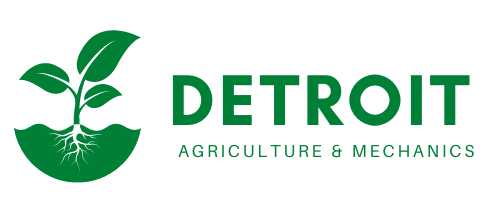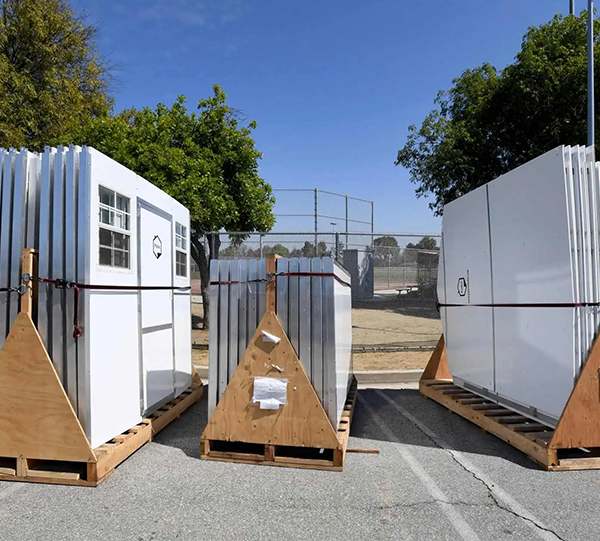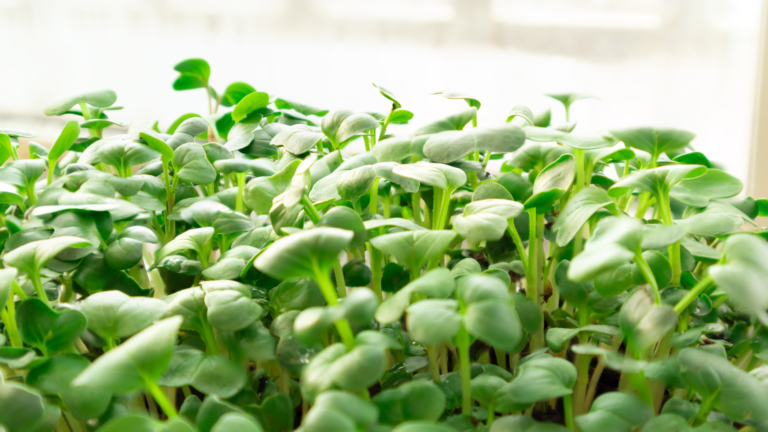Detroit A&M’s Agricultural Farm
Vertical farming at Detroit A&M’s agricultural farm, will be housed within a 50×100 foot steel building, offers numerous benefits over traditional farming methods. The advantages of vertical farming include:
- Efficient Space Utilization: Vertical farming maximizes space by utilizing vertical tiers or shelves, allowing for multiple layers of crops to be grown within a compact area. Compared to traditional farming, which relies on horizontal land expansion, vertical farming can achieve significantly higher crop production per square foot.
- Year-Round Crop Production: Vertical farming operates in a controlled indoor environment, providing consistent growing conditions throughout the year. By controlling factors like lighting, temperature, and nutrient delivery, vertical farms can sustain continuous crop production, irrespective of seasonal variations. This leads to a higher overall yield compared to traditional farming, which is limited by seasonal constraints.
- Increased Crop Yield: Vertical farming’s optimized growing conditions, such as precise light spectrum and intensity, ideal temperature, and balanced nutrient delivery, promote faster plant growth and development. These optimal conditions, coupled with efficient space utilization, result in higher crop yields per unit area compared to traditional farming.
- Water Conservation: Vertical farming employs advanced irrigation techniques, such as drip irrigation or hydroponics, which significantly reduce water usage compared to traditional farming methods. The closed-loop water systems in vertical farms recycle and reuse water, minimizing water waste and conserving this precious resource.
- Reduced Environmental Impact: Vertical farming minimizes the need for chemical pesticides and herbicides due to the controlled and protected growing environment. This reduces the environmental impact associated with conventional farming practices. Additionally, vertical farming requires less land, mitigating deforestation and habitat loss.
- Locally Sourced and Fresh Produce: Vertical farms can be located in or near urban areas, bringing food production closer to consumers. This shorter supply chain reduces transportation and storage requirements, ensuring that consumers have access to fresh, locally sourced produce.
While the specific average yield of vertical farming at Detroit A&M’s agricultural farm would depend on various factors such as crop type, growing techniques, and technology employed, vertical farming generally offers higher yields compared to traditional farming. Some studies have reported that vertical farms can produce up to 10 times more yield per square foot compared to conventional agriculture.
It is important to note that yield comparisons can vary depending on crop selection, farming practices, and specific conditions. However, vertical farming’s ability to stack crops vertically and optimize growth conditions makes it a highly efficient and productive method of agriculture.
In summary, vertical farming at Detroit A&M’s agricultural farm offers benefits such as efficient space utilization, year-round production, increased crop yields, water conservation, reduced environmental impact, and access to fresh, locally sourced produce. These advantages, combined with the controlled indoor environment, contribute to a higher average yield compared to traditional farming methods.







